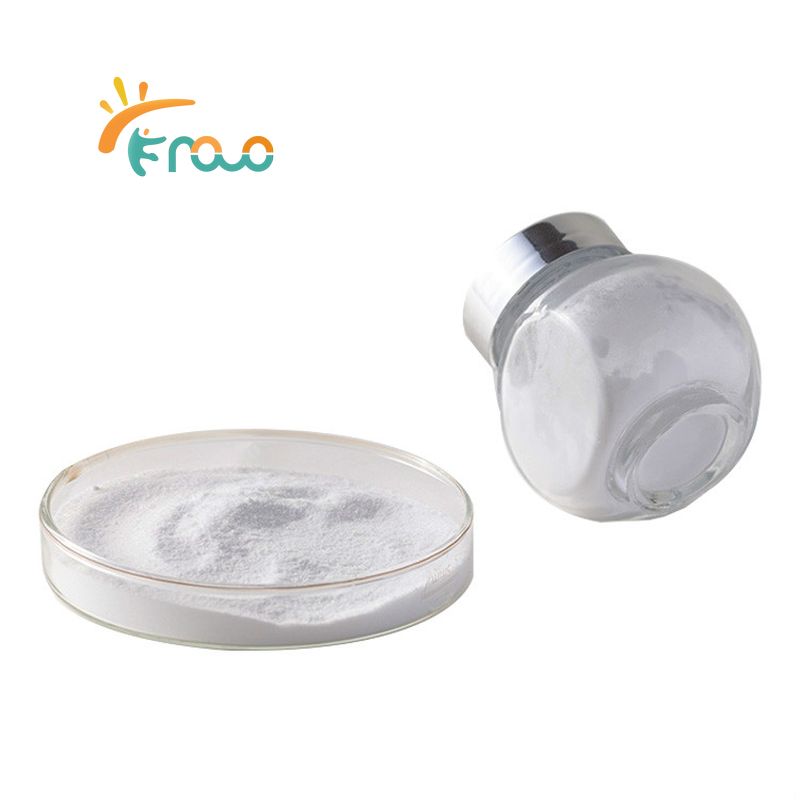┘ģž¦ ┘ć┘Ŗ ž¦ž│ž¬ž«ž»ž¦┘ģž¦ž¬ ┘āž©ž▒┘Ŗž¬ž¦ž¬ ž¦┘äž¼┘ä┘ł┘ā┘łž▓ž¦┘ģ┘Ŗ┘垤
Jun 25, 2025
┘āž©ž▒┘Ŗž¬ž¦ž¬ ž¦┘äž¼┘ä┘ł┘ā┘łž▓ž¦┘ģ┘Ŗ┘å
┘ć┘ł ┘ģž▒┘āž© žĘž©┘Ŗž╣┘Ŗ ┘ģ┘łž¼┘łž» ┘ü┘Ŗ ž¦┘äž║žČž¦ž▒┘Ŗ┘ü ž¦┘äž│┘ä┘Ŗ┘ģž®žī ┘łž«ž¦žĄž®┘ŗ ┘ü┘Ŗ ž¦┘äž│ž¦ž”┘ä ž¦┘ä┘ģžŁ┘ŖžĘ ž©ž¦┘ä┘ģ┘üž¦žĄ┘ä. ┘ł┘Ŗ┘Åž│ž¬ž«ž»┘ģ ž╣ž¦ž»ž®┘ŗ ┘ā┘Ć
┘ģ┘ā┘ģ┘ä ž║ž░ž¦ž”┘Ŗ
┘äž»ž╣┘ģ žĄžŁž® ž¦┘ä┘ģ┘üž¦žĄ┘äžī ž«ž¦žĄž®┘ŗ ┘äž»┘ē ž¦┘ä┘ģžĄž¦ž©┘Ŗ┘å ž©┘ćž┤ž¦ž┤ž® ž¦┘äž╣žĖž¦┘ģ. ž¬ž│ž¬┘āž┤┘ü ┘ćž░┘ć ž¦┘ä┘ģ┘鞦┘äž® ž¦┘䞦ž│ž¬ž«ž»ž¦┘ģž¦ž¬ ž¦┘äž▒ž”┘Ŗž│┘Ŗž® ┘ä┘āž©ž▒┘Ŗž¬ž¦ž¬ ž¦┘äž¼┘ä┘ł┘ā┘łž▓ž¦┘ģ┘Ŗ┘å ┘ł┘ü┘łž¦ž”ž»┘枦 ┘łžóž½ž¦ž▒┘枦 ž¦┘äž¼ž¦┘åž©┘Ŗž® ž¦┘ä┘ģžŁž¬┘ģ┘äž®.
ž¦┘䞦ž│ž¬ž«ž»ž¦┘ģž¦ž¬ ž¦┘䞯ž│ž¦ž│┘Ŗž® ┘ä┘āž©ž▒┘Ŗž¬ž¦ž¬ ž¦┘äž¼┘ä┘ł┘ā┘łž▓ž¦┘ģ┘Ŗ┘å
1. ž¬ž«┘ü┘Ŗ┘ü ┘ćž┤ž¦ž┤ž® ž¦┘äž╣žĖž¦┘ģ
ž¦┘䞦ž│ž¬ž«ž»ž¦┘ģ ž¦┘䞯┘āž½ž▒ ž┤┘Ŗ┘łž╣┘ŗž¦ ┘ä┘āž©ž▒┘Ŗž¬ž¦ž¬ ž¦┘äž¼┘ä┘ł┘ā┘łž▓ž¦┘ģ┘Ŗ┘å ┘ć┘ł ž╣┘䞦ž¼ ┘ćž┤ž¦ž┤ž® ž¦┘äž╣žĖž¦┘ģ (OA)žī ┘ł┘ć┘ł ┘ģž▒žČ ž¬┘å┘āž│┘Ŗ ┘ŖžĄ┘Ŗž© ž¦┘ä┘ģ┘üž¦žĄ┘ä ┘ł┘Ŗžżž»┘Ŗ žź┘ä┘ē ž¬žó┘ā┘ä ž¦┘äž║žČž¦ž▒┘Ŗ┘ü. ž¬ž┤┘Ŗž▒ ž¦┘䞯ž©žŁž¦ž½ žź┘ä┘ē žŻ┘å ┘āž©ž▒┘Ŗž¬ž¦ž¬ ž¦┘äž¼┘ä┘ł┘ā┘łž▓ž¦┘ģ┘Ŗ┘å ┘éž» ž¬ž│ž¦ž╣ž» ┘ü┘Ŗ:
ŌĆó ž¬┘é┘ä┘Ŗ┘ä žó┘䞦┘ģ ž¦┘ä┘ģ┘üž¦žĄ┘ä ┘łž¬┘Ŗž©ž│┘枦
ŌĆó ž¬ž»┘ć┘łž▒ ž©žĘ┘ŖžĪ ┘ä┘äž║žČž▒┘ł┘ü
ŌĆó ž¬žŁž│┘Ŗ┘å ┘łžĖ┘Ŗ┘üž® ž¦┘ä┘ģ┘üž¦žĄ┘ä ┘ł┘éž»ž▒ž¬┘枦 ž╣┘ä┘ē ž¦┘䞣ž▒┘āž®
ž¬ž┤┘Ŗž▒ ž©ž╣žČ ž¦┘äž»ž▒ž¦ž│ž¦ž¬ žź┘ä┘ē žŻ┘å ž¦┘䞦ž│ž¬ž«ž»ž¦┘ģ žĘ┘ł┘Ŗ┘ä ž¦┘䞯┘ģž» (6 žŻž┤┘ćž▒ ž╣┘ä┘ē ž¦┘䞯┘é┘ä) ┘Ŗ┘ģ┘ā┘å žŻ┘å ┘Ŗ┘ł┘üž▒ ž▒ž¦žŁž® ┘āž©┘Ŗž▒ž®žī ┘łž«ž¦žĄž® ┘ü┘Ŗ ┘ćž┤ž¦ž┤ž® ž¦┘äž╣žĖž¦┘ģ ┘ü┘Ŗ ž¦┘äž▒┘āž©ž®.
2. ž¦┘䞣┘üž¦žĖ ž╣┘ä┘ē žĄžŁž® ž¦┘ä┘ģ┘üž¦žĄ┘ä
ž║ž¦┘äž©┘ŗž¦ ┘ģž¦ ┘Ŗ┘Åžżž«ž░ ┘āž©ž▒┘Ŗž¬ž¦ž¬ ž¦┘äž¼┘ä┘ł┘ā┘łž▓ž¦┘ģ┘Ŗ┘å ┘ā┘ģ┘ā┘ģ┘ä ž║ž░ž¦ž”┘Ŗ ┘ł┘鞦ž”┘Ŗ ┘ä┘䞣┘üž¦žĖ ž╣┘ä┘ē žĄžŁž® ž¦┘ä┘ģ┘üž¦žĄ┘äžī ž«ž¦žĄž®┘ŗ ┘äž»┘ē ┘āž©ž¦ž▒ ž¦┘äž│┘å žŻ┘ł ž¦┘äž▒┘Ŗž¦žČ┘Ŗ┘Ŗ┘å ž¦┘ä┘ģž╣ž▒žČ┘Ŗ┘å ┘䞬žó┘ā┘ä ž¦┘ä┘ģ┘üž¦žĄ┘ä. ┘ü┘ć┘ł ┘Ŗž»ž╣┘ģ ž©┘å┘Ŗž® ž¦┘äž║žČž¦ž▒┘Ŗ┘ü ┘ģ┘å ž«┘䞦┘ä ž¬ž╣ž▓┘Ŗž▓ žź┘垬ž¦ž¼ ž¦┘äž©ž▒┘łž¬┘Ŗ┘łž║┘ä┘Ŗ┘āž¦┘åžī ┘ł┘ć┘Ŗ ┘ģ┘ā┘ł┘垦ž¬ žŻž│ž¦ž│┘Ŗž® ┘äž║žČž¦ž▒┘Ŗ┘ü ž¦┘ä┘ģ┘üž¦žĄ┘ä.
3. žŁž¦┘䞦ž¬ ž¦┘䞬┘枦ž© ž¦┘ä┘ģ┘üž¦žĄ┘ä
ž╣┘ä┘ē ž¦┘äž▒ž║┘ģ ┘ģ┘å ž¦┘䞣ž¦ž¼ž® žź┘ä┘ē ┘ģž▓┘Ŗž» ┘ģ┘å ž¦┘äž©žŁž½žī ž¬ž┤┘Ŗž▒ ž©ž╣žČ ž¦┘䞯ž»┘äž® žź┘ä┘ē žŻ┘å ┘āž©ž▒┘Ŗž¬ž¦ž¬ ž¦┘äž¼┘ä┘ł┘ā┘łž▓ž¦┘ģ┘Ŗ┘å ┘éž» ┘Ŗ┘ā┘ł┘å ┘ä┘枦 ž¬žŻž½┘Ŗž▒ž¦ž¬ ž«┘ü┘Ŗ┘üž® ┘ģžČž¦ž»ž® ┘ä┘䞦┘䞬┘枦ž©ž¦ž¬žī ┘ģ┘ģž¦ ┘éž» ┘Ŗ┘ü┘Ŗž» žŁž¦┘䞦ž¬ ┘ģž½┘ä ž¦┘䞬┘枦ž© ž¦┘ä┘ģ┘üž¦žĄ┘ä ž¦┘äž▒┘ł┘ģž¦ž¬┘ł┘Ŗž»┘Ŗ (RA) žŻ┘ł ž¦┘䞬┘枦ž© ž¦┘äž¼ž▒ž¦ž©. ┘ł┘ģž╣ ž░┘ä┘āžī ┘ü┘ć┘Ŗ ┘ä┘Ŗž│ž¬ ž╣┘䞦ž¼┘ŗž¦ žŻž│ž¦ž│┘Ŗ┘ŗž¦ ┘䞦žČžĘž▒ž¦ž©ž¦ž¬ ž¦┘ä┘ģ┘üž¦žĄ┘ä ž¦┘ä┘ģ┘垦ž╣┘Ŗž® ž¦┘äž░ž¦ž¬┘Ŗž®.
┘ā┘Ŗ┘ü ž¬ž╣┘ģ┘ä ┘āž©ž▒┘Ŗž¬ž¦ž¬ ž¦┘äž¼┘ä┘ł┘ā┘łž▓ž¦┘ģ┘Ŗ┘垤
ž¦┘äž¼┘ä┘ł┘ā┘łž▓ž¦┘ģ┘Ŗ┘å ┘ć┘ł ž╣┘åžĄž▒ žŻž│ž¦ž│┘Ŗ ┘ü┘Ŗ ž©┘垦žĪ ž¦┘äž║┘ä┘Ŗ┘ā┘łž▓ žŻ┘ģ┘Ŗ┘å┘łž║┘ä┘Ŗ┘āž¦┘åžī ┘ł┘ć┘ł žČž▒┘łž▒┘Ŗ ┘䞬┘ā┘ł┘Ŗ┘å ž¦┘äž║žČž¦ž▒┘Ŗ┘ü. ž¦┘ä┘āž©ž▒┘Ŗž¬ž¦ž¬ žČž▒┘łž▒┘Ŗž® ┘䞦žŁž¬┘üž¦žĖ ž¦┘äž║žČž▒┘ł┘ü ž©ž¦┘ä┘ģž¦žĪžī ┘ģ┘ģž¦ ┘ŖžČ┘ģ┘å ž¬ž▓┘Ŗ┘Ŗž¬ ž¦┘ä┘ģ┘üž¦žĄ┘ä ┘łž¦┘ģž¬žĄž¦žĄ ž¦┘䞥ž»┘ģž¦ž¬. ž©ž¬┘垦┘ł┘ä ┘ģ┘ā┘ģ┘䞦ž¬ ┘āž©ž▒┘Ŗž¬ž¦ž¬ ž¦┘äž¼┘ä┘ł┘ā┘łž▓ž¦┘ģ┘Ŗ┘åžī ┘éž» ┘Ŗ┘Åž│ž¦ž╣ž» ž¦┘䞯┘üž▒ž¦ž» ž╣┘ä┘ē ž¬ž¼ž»┘Ŗž» ┘ćž░┘ć ž¦┘ä┘ģ┘ā┘ł┘垦ž¬žī ┘ģ┘ģž¦ ┘Ŗ┘Åž©žĘž” ┘ģ┘å ž¬ž»┘ć┘łž▒ ž¦┘ä┘ģ┘üž¦žĄ┘ä.
ž¦┘äž¼ž▒ž╣ž® ┘łž¦┘äžźž»ž¦ž▒ž®
ž¦┘äž¼ž▒ž╣ž® ž¦┘ä┘å┘ģ┘łž░ž¼┘Ŗž® ┘ä┘ćž┤ž¦ž┤ž® ž¦┘äž╣žĖž¦┘ģ ┘ć┘Ŗ 1500 ┘ģ┘äž║ ┘Ŗ┘ł┘ģ┘Ŗ┘ŗž¦žī ž¬┘Åžżž«ž░ žź┘ģž¦ ┘āž¼ž▒ž╣ž® ┘łž¦žŁž»ž® žŻ┘ł ┘ģ┘éž│┘ģž® ž╣┘ä┘ē ž½┘䞦ž½ ž¼ž▒ž╣ž¦ž¬žī ┘ā┘ä ž¼ž▒ž╣ž® 500 ┘ģ┘äž║. ┘Ŗž¬┘ł┘üž▒ ž¦┘äž»┘łž¦žĪ ž╣┘ä┘ē ž┤┘ā┘ä ┘āž©ž│┘ł┘䞦ž¬ ┘łžŻ┘éž▒ž¦žĄ ┘łž┤ž▒ž¦ž©. ┘ä┘䞣žĄ┘ł┘ä ž╣┘ä┘ē žŻ┘üžČ┘ä ž¦┘ä┘垬ž¦ž”ž¼žī ┘Ŗ┘Å┘åžĄžŁ ž©ž¦┘䞦ž│ž¬┘ģž▒ž¦ž▒ ┘ü┘Ŗ ž¦ž│ž¬ž«ž»ž¦┘ģ┘ć ┘äž╣ž»ž® žŻž┤┘ćž▒.
ž¦┘äžóž½ž¦ž▒ ž¦┘äž¼ž¦┘åž©┘Ŗž® ž¦┘ä┘ģžŁž¬┘ģ┘äž®
┘Ŗž╣ž¬ž©ž▒ ┘āž©ž▒┘Ŗž¬ž¦ž¬ ž¦┘äž¼┘ä┘ł┘ā┘łž▓ž¦┘ģ┘Ŗ┘å žó┘ģ┘å┘ŗž¦ ž©ž┤┘ā┘ä ž╣ž¦┘ģžī ┘ł┘ä┘ā┘å ┘éž» ┘Ŗž╣ž¦┘å┘Ŗ ž©ž╣žČ ž¦┘䞯┘üž▒ž¦ž» ┘ģ┘å:
ŌĆó ┘ģž┤ž¦┘ā┘ä ┘ćžČ┘ģ┘Ŗž® ž«┘ü┘Ŗ┘üž® (ž║ž½┘Ŗž¦┘åžī žŁž▒┘éž® ž¦┘ä┘ģž╣ž»ž®žī žźž│┘枦┘ä)
ŌĆó ž▒ž»┘łž» ž¦┘ä┘üž╣┘ä ž¦┘䞬žŁž│ž│┘Ŗž® (ž«ž¦žĄž® ┘äž»┘ē ž¦┘䞯ž┤ž«ž¦žĄ ž¦┘äž░┘Ŗ┘å ┘Ŗž╣ž¦┘å┘ł┘å ┘ģ┘å žŁž│ž¦ž│┘Ŗž® ž¬ž¼ž¦┘ć ž¦┘ä┘ģžŁž¦ž▒žī žŁ┘Ŗž½ žŻ┘å ž©ž╣žČ ž¦┘ä┘ģ┘ā┘ģ┘䞦ž¬ ž¦┘äž║ž░ž¦ž”┘Ŗž® ┘ģž┤ž¬┘éž® ┘ģ┘å žŻžĄž»ž¦┘ü ž¦┘ä┘ģžŁž¦ž▒)
ŌĆó ž¦ž▒ž¬┘üž¦ž╣ ┘ģž│ž¬┘ł┘Ŗž¦ž¬ ž¦┘äž│┘āž▒ ┘ü┘Ŗ ž¦┘äž»┘ģ (ž¬žŁž░┘Ŗž▒ ┘ä┘ģž▒žČ┘ē ž¦┘äž│┘āž▒┘Ŗ)
ž«ž¦ž¬┘ģž®
┘Ŗ┘Åž│ž¬ž«ž»┘ģ ┘āž©ž▒┘Ŗž¬ž¦ž¬ ž¦┘äž¼┘ä┘ł┘ā┘łž▓ž¦┘ģ┘Ŗ┘å ž╣┘ä┘ē ┘åžĘž¦┘é ┘łž¦ž│ž╣ ┘䞬ž«┘ü┘Ŗ┘ü žŻž╣ž▒ž¦žČ ┘ćž┤ž¦ž┤ž® ž¦┘äž╣žĖž¦┘ģžī ┘łž»ž╣┘ģ žĄžŁž® ž¦┘ä┘ģ┘üž¦žĄ┘äžī ┘łž▒ž©┘ģž¦ ž¬┘é┘ä┘Ŗ┘ä ž¦┘䞦┘䞬┘枦ž©. ┘łž▒ž║┘ģ ž¬ž©ž¦┘Ŗ┘å ┘垬ž¦ž”ž¼ ž¦┘䞯ž©žŁž¦ž½ žŁ┘ł┘ä ┘üž╣ž¦┘ä┘Ŗž¬┘ćžī žŻ┘üž¦ž» ž¦┘äž╣ž»┘Ŗž» ┘ģ┘å ž¦┘ä┘ģž│ž¬ž«ž»┘ģ┘Ŗ┘å ž©ž¬┘é┘ä┘Ŗ┘ä ž¦┘䞯┘ä┘ģ ┘łž¬žŁž│┘Ŗ┘å ž¦┘ä┘éž»ž▒ž® ž╣┘ä┘ē ž¦┘䞣ž▒┘āž®. ┘ł┘ā┘ģž¦ ┘ć┘ł ž¦┘䞣ž¦┘ä ┘ģž╣ žŻ┘Ŗ ┘ģ┘ā┘ģ┘ä ž║ž░ž¦ž”┘Ŗžī ┘Ŗ┘Å┘åžĄžŁ ž©ž¦ž│ž¬ž┤ž¦ž▒ž® ┘ģ┘éž»┘ģ ž¦┘äž▒ž╣ž¦┘Ŗž® ž¦┘䞥žŁ┘Ŗž® ┘éž©┘ä ž¦┘䞦ž│ž¬ž«ž»ž¦┘ģžī ž«ž¦žĄž®┘ŗ ┘ä┘䞯ž┤ž«ž¦žĄ ž¦┘äž░┘Ŗ┘å ┘Ŗž╣ž¦┘å┘ł┘å ┘ģ┘å žŁž¦┘䞦ž¬ žĘž©┘Ŗž® ž│ž¦ž©┘éž® žŻ┘ł ┘Ŗž¬┘垦┘ł┘ä┘ł┘å žŻž»┘ł┘Ŗž® žŻž«ž▒┘ē.
┘ģ┘å ž«┘䞦┘ä ž»┘ģž¼ ┘āž©ž▒┘Ŗž¬ž¦ž¬ ž¦┘äž¼┘ä┘ł┘ā┘łž▓ž¦┘ģ┘Ŗ┘å ┘ü┘Ŗ ┘åžĖž¦┘ģ ž¦┘äž╣┘垦┘Ŗž® ž©ž¦┘ä┘ģ┘üž¦žĄ┘ä - ž¼┘åž©┘ŗž¦ žź┘ä┘ē ž¼┘åž© ┘ģž╣ ┘ģ┘ģž¦ž▒ž│ž® ž¦┘䞬┘ģž¦ž▒┘Ŗ┘å ž¦┘äž▒┘Ŗž¦žČ┘Ŗž®žī ┘łž¦ž¬ž©ž¦ž╣ ┘åžĖž¦┘ģ ž║ž░ž¦ž”┘Ŗ žĄžŁ┘Ŗžī ┘łžźž»ž¦ž▒ž® ž¦┘ä┘łž▓┘å - ┘éž» ┘Ŗž¬┘ģž¬ž╣ ž¦┘䞯┘üž▒ž¦ž» ž©┘łžĖ┘Ŗ┘üž® ┘ģ┘üž¦žĄ┘ä žŻ┘üžČ┘ä ┘łž¼┘łž»ž® žŁ┘Ŗž¦ž® žŻ┘üžČ┘ä.


 ž¦┘äž╣ž▒ž©┘Ŗž®
ž¦┘äž╣ž▒ž©┘Ŗž®















